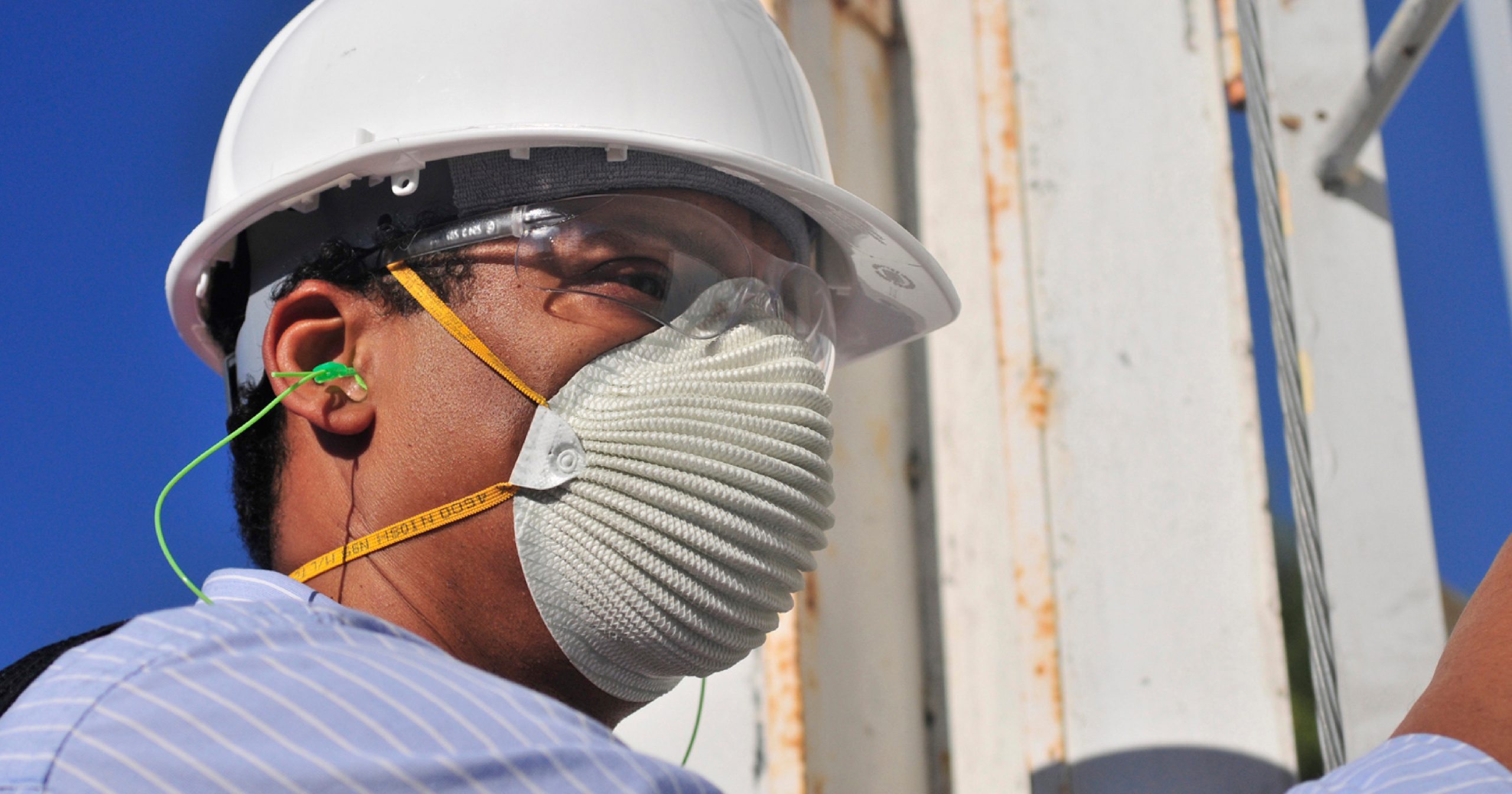On some worksites, employees may inquire about or want to use respirators. Voluntary use of respirators may give your employees a sense of comfort and ease while at work, even in safe conditions. OSHA requires employers to meet certain obligations for workers who voluntarily wear respirators on the job. As an employer, make sure you understand your responsibilities under OSHA's respiratory protection voluntary use requirements.
First, if you have determined that your workers are not mandated to wear masks to protect them from airborne hazards, then all respirator use is considered voluntary. According to OSHA, respiratory protection is mandatory when engineering controls and work practice controls cannot contain hazardous airborne material such as harmful dusts, gases, vapors, mists, fogs and smoke.
If not mandatory, workers may request voluntary use of a respirator even though you have determined this is not technically required by compliance regulations. For instance, respirator use might be requested to avoid exposure to airborne hazards regardless of limits set by OSHA standards. In other cases, a respirator could increase your employees’ comfort when working in dusty conditions, such as sweeping a shop floor, or if an employee has asthma.
Filtering Facepieces
If your employees will be wearing filtering facepieces of their own accord, you must follow the appropriate provisions in (c)(2) of the Respiratory Protection Standard. While there’s not a written respiratory program requirement for voluntary filtering respirator use, your employee must ensure their respirator is appropriately maintained, cleaned and stored. This will prevent health issues, interference with ability to perform on the job and future health hazards.
After you determine this will not cause a hazard, you are required to provide a copy of Appendix D of OSHA's Respiratory Protection Standard (or an equivalent state OSHA agency document) to each employee voluntarily using a respirator. The document contains precautions to be taken when wearing a respirator voluntarily. Broadly, Appendix D instructs:
• to choose respirators that have been certified by NIOSH
• to follow the manufacturer's instructions provided with a respirator. The instructions include information on how to use it properly and maintain and care for the respirator. Instructions also provide warnings on the known limitations of the respirator.
• to wear a respirator appropriate for the certain conditions. For example, a particulate respirator does not protect against gases, vapors and the non-particulate components of fumes, mists, fogs, smoke and sprays.
• to keep track of your respirator so that you do not mistakenly use someone else's respirator
Other Facepieces
Employees voluntarily wearing other types of respirators - such as elastomeric facepieces and powered air-purifying respirators – must also adhere to Appendix D. Before anyone can voluntarily use a respirator that is not categorized as filtering you, again, must ensure that its use does not present a health hazard to your employees.
However, voluntary use of air purifying facepieces varies from filtering facepieces. Employers must implement certain elements of a written respiratory protection program – such as a medical evaluation - necessary to ensure that any worker using a respirator voluntarily is medically fit to use that respirator.
The medical evaluation is necessary as tight-fitted respirators may cause physiologic effects on the wearer of the respirator. A medical evaluation will ensure whether or not workers can endure the effects of wearing a mask (63 Fed. Reg. at 1190).
Best Practices for Voluntary Respirator Use
While OSHA may not have the same mandates for voluntary use, employers may want to standardize their operations and protocols to the stricter standards for everyone wearing a mask. This could help your administrative efforts and prevent dangerous misuse. When everyone follows the same standard, such as fit testing or facial hair, you create a culture of safety and reduce the chance of risk for everyone in your respiratory protection program.
Conclusion
For more information about respirator use in your workplace, refer to these OSHA and NIOSH websites. For a comprehensive look at OSHA’s respiratory protection compliance, see directive “Inspection Procedures for the Respiratory Protection Standard” CPL 02-00-158 . You will find OSHA's Respiratory Protection Standard, additional respirator training videos, and other guidance material to help you work safely.
---
This is business-to-business information intended for EHS (environmental health and safety) professionals and not intended for the final consumer. Companies should check the local regulatory status of any claim according to their individual needs, requirements and intended use.
